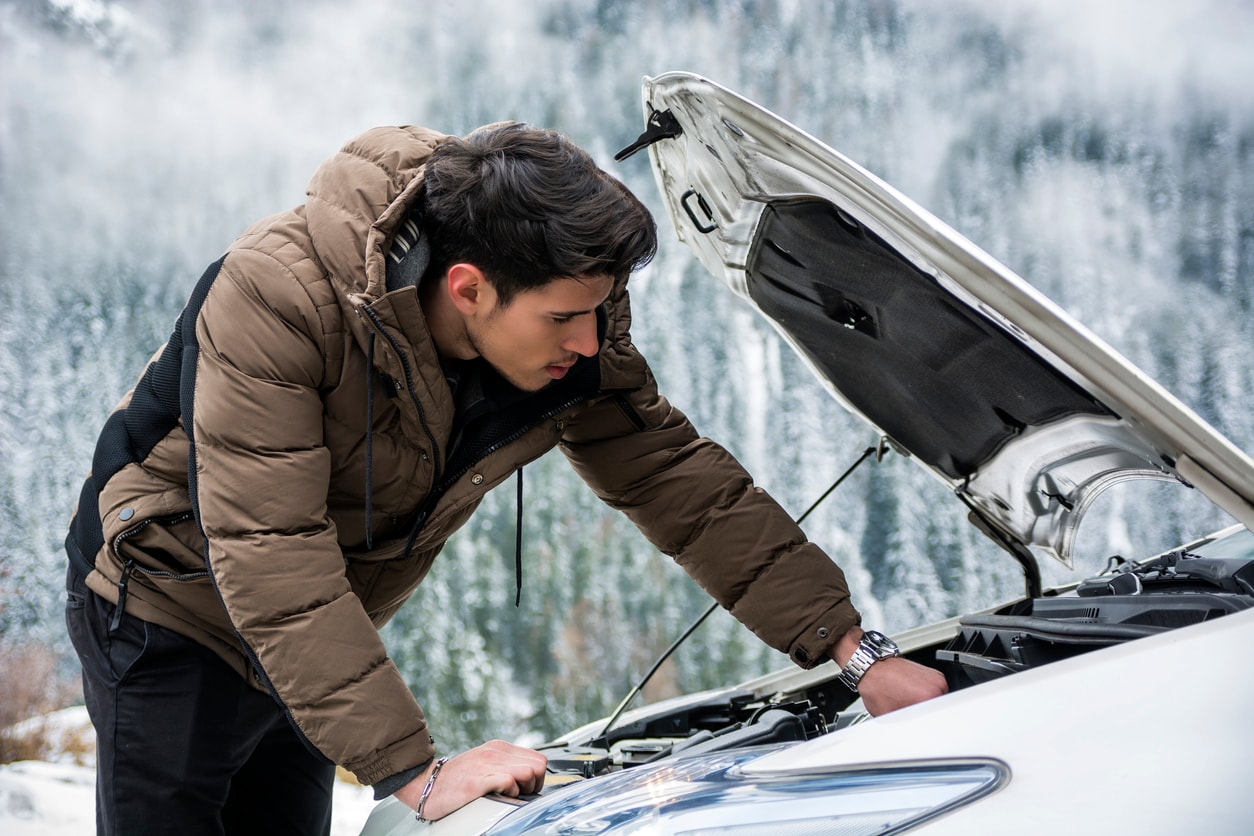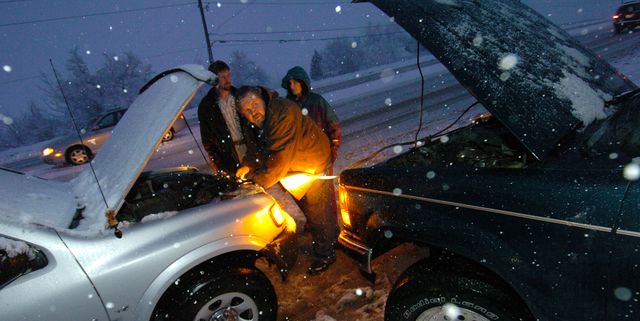- Jeep Cherokee Push Button Start Not Working: Troubleshooting Tips To Get You Back on the Road Fast! - 11 November 2023
- Haval H2 Problems: The Complete Troubleshooting Guide - 11 November 2023
- Gwm P Series Problems: Troubleshooting Guide for Common Issues - 11 November 2023
To keep your car battery from dying in cold weather, make sure to regularly drive or take longer trips, avoid short trips, and turn off and unplug any unnecessary accessories or electronics. These practices will help maintain the charge and prevent the battery from discharging quickly in cold temperatures.
Cold weather can be harsh on car batteries, often leading to dead batteries and frustrating situations. When the temperature drops, the chemical reactions inside the battery slow down, reducing its ability to hold a charge. This, combined with increased battery load from heaters and other electronic accessories, can significantly decrease your car’s starting power.
However, by following a few simple steps, you can prevent your car battery from dying in cold weather and avoid the inconvenience of being stranded with a non-starting vehicle. We will discuss effective strategies for keeping your car battery healthy and functional during the winter season.
Regularly Drive Your Car For Longer Distances
To keep your car battery from dying in cold weather, one effective tip is to regularly drive your car for longer distances. This helps to keep the battery charged and prevents it from freezing or losing power due to the cold temperatures.
One of the most effective ways to keep your car battery charged in cold weather is to drive your car regularly for longer distances. When you drive your car, the alternator charges the battery, ensuring it stays sufficiently charged to start your vehicle even in freezing temperatures.
Short trips, on the other hand, do not allow your car’s battery to fully charge. The battery needs time and distance to reach its optimal charge level, and short trips do not provide that opportunity. Aim to drive your car for at least 20-30 minutes or take it for a longer drive on weekends to keep the battery charged.
By driving your car regularly or for longer distances, you allow the alternator to do its job of charging the battery. This helps prevent the battery from draining and potentially dying in cold weather.
Avoid Short Trips That Don’t Allow Your Car’s Battery To Fully Charge
Short trips can be unavoidable at times, but they can have a negative impact on your car’s battery, especially in cold weather. During cold weather, the battery’s capacity is reduced, and short trips may not provide enough time for the alternator to recharge the battery fully.
Each time you start your car, it consumes a significant amount of electricity from the battery. If your trips are short, the battery may not have enough time to replenish the lost charge, leading to a weak battery over time. This can increase the likelihood of your car not starting when you need it most.
Therefore, it is best to avoid short trips as much as possible during cold weather. Consider combining errands or finding alternative modes of transportation for shorter distances. This will minimize the strain on your car’s battery and help keep it fully charged.
Use A Block Heater And Plug It In
In extremely cold weather, it’s essential to take extra measures to keep your car battery from dying. One effective method is to use a block heater and plug it in. This simple step can significantly prolong the life of your battery and ensure your car starts smoothly, even on the coldest winter days.
Ensure Your Car Has A Block Heater
Before you can plug in your block heater, it’s important to ensure that your car is equipped with one. Many vehicles, especially those designed for colder climates, come with a built-in block heater. You can check your car’s owner’s manual or consult with a mechanic to determine if your vehicle has this feature.
Plug It In To Keep The Engine Warm
Once you’ve confirmed that your car has a block heater, the next step is to plug it in. The block heater is designed to keep the engine warm, which is crucial for easy starting in cold weather. By connecting your block heater to a power source, you can prevent the battery from draining and maintain optimal engine temperature.
To plug in your block heater, locate the designated outlet on your vehicle. This outlet is typically located near the front of the vehicle and may be hidden behind a protective cover. Once you’ve found the outlet, simply connect the block heater cord to a suitable extension cord and plug it into an electrical outlet.
A Heated Engine Turns Over Easier And Starts More Quickly
By using a block heater and plugging it in, the heat generated by the device warms up the engine and surrounding components. This heat makes it easier for the engine to turn over and ensures a quicker start, even in freezing temperatures. As a result, you won’t have to worry about your battery dying or struggling to start your car on those chilly winter mornings.
Isolate Your Car Battery From Temperature Extremes
Keep your car battery from dying in cold weather by isolating it from temperature extremes. Avoid short trips and turn off and unplug any unnecessary electronics. Additionally, consider using a trickle charger or insulation blanket to keep the battery warm.
Regularly starting your car or using a block heater can also help prevent a dead battery in the winter.
Prevent Fluid From Freezing By Keeping Your Car Battery Isolated From Temperature Extremes.
One of the key factors in keeping your car battery healthy during the cold winter months is to prevent the fluid inside it from freezing. When the temperature drops, the electrolyte solution in the battery can freeze, causing significant damage and reducing its ability to hold a charge. To avoid this, it is essential to isolate your car battery from temperature extremes.
Avoid Exposing Your Car Battery To Extremely Cold Or Hot Conditions.
Exposing your car battery to extreme temperatures, whether it be extremely cold or hot, can have a detrimental effect on its performance and lifespan. In cold weather, the chemical reactions that happen inside the battery slow down, making it harder for the battery to produce the necessary power to start your car. On the other hand, high temperatures can cause the battery fluid to evaporate, leading to reduced battery life. To avoid these issues, it is crucial to protect your car battery from both extreme cold and hot conditions.
There are several ways to isolate your car battery from temperature extremes. Here are a few tips:
- Park your car in a garage or covered parking space to shield it from harsh weather conditions.
- If a garage or covered parking space is not available, consider using a car battery insulation kit. These kits help maintain a stable temperature around the battery, preventing it from being affected by extreme weather.
- During extremely cold weather, use a battery blanket or heating pad designed specifically for car batteries. These devices provide extra warmth and prevent the battery fluid from freezing.
- Similarly, during hot weather, use a battery cooling system to keep the temperature of the battery within a safe range.
By taking these steps to isolate your car battery from temperature extremes, you can help prolong its lifespan and ensure reliable starting power during the cold winter months. Remember, a little bit of prevention can go a long way in keeping your car battery healthy throughout the year.
Mount A Trickle Charger On Your Car Battery
To keep your car battery from dying in cold weather, consider mounting a trickle charger on the battery. This provides an additional heat source that helps prevent fluid from freezing and keeps the battery charged. It’s a simple and effective way to protect your car battery during cold winter months.
Keep Your Car Battery Heated By Mounting A Trickle Charger On It.
One effective way to keep your car battery from dying in cold weather is to mount a trickle charger on it. When the temperature drops, the additional heat produced by the trickle charger prevents the battery’s internal fluid from freezing, ensuring optimal performance even in freezing conditions.
Mounting a trickle charger is a simple process that can be done at home. To do so, follow these steps:
- Start by gathering the necessary tools and equipment, including a trickle charger, a wrench, and safety gloves.
- Locate your car’s battery, which is typically located under the hood or in the trunk.
- Disconnect the negative (black) terminal cable from the battery using a wrench. This ensures that there is no electrical connection between the battery and the rest of the car.
- Connect the positive (red) terminal cable of the trickle charger to the positive terminal of the battery.
- Connect the negative (black) terminal cable of the trickle charger to the negative terminal of the battery.
- Ensure that the connections are secure and tight to prevent any electrical mishaps.
- Plug in the trickle charger to a power outlet. The charger will automatically regulate the flow of electricity to the battery, keeping it heated without overcharging.
- Monitor the battery periodically and ensure that the trickle charger remains connected during cold weather.
By mounting a trickle charger on your car battery, you can provide it with the additional heat it needs to prevent freezing and ensure reliable starts even in extremely cold temperatures. Remember to follow the steps carefully and consult your car’s manual for specific instructions on disconnecting and reconnecting the battery.
Park Your Car In A Garage
To keep your car battery from dying in cold weather, try parking your car in a garage whenever possible. This can help protect your vehicle and battery from the effects of cold temperatures. Another option is to cover your car overnight with a vehicle cover to lock in some heat and prevent ice formation.
When Possible, Park Your Car In A Garage To Protect It From Cold Weather.
Parking your car in a garage during cold weather can have a significant impact on the performance and longevity of your car battery. The harsh winter conditions can cause the battery’s charge to deplete more quickly, making it more susceptible to dying when you need it the most. By parking your car in a garage, you can shield it from frigid temperatures and keep the battery warmer, extending its lifespan and reducing the risk of it dying.
When your car is parked in an enclosed garage, it benefits from the insulation provided by the walls and roof, which helps maintain a higher temperature compared to the freezing outdoor environment. This additional heat prevents the battery’s fluid from freezing, enabling it to function optimally. Additionally, the engine itself may be warmer when parked in a garage, making it easier to start the car in cold weather.
Parking in a garage not only protects your car battery but also shields your entire vehicle from the effects of cold weather. The freezing temperatures can cause various components, such as fluids, belts, and hoses, to contract and become brittle, increasing the risk of damage. By keeping your vehicle in a garage, you minimize exposure to these extreme conditions and help extend the overall lifespan of the vehicle.

Credit: www.firestonecompleteautocare.com
Frequently Asked Questions On How To Keep Your Car Battery From Dying In Cold Weather
How Do I Stop My Car Battery From Draining In Cold Weather?
To prevent your car battery from draining in cold weather, follow these tips:1. Park your car in a garage to protect it from the cold. 2. Use a vehicle cover overnight to help retain heat and prevent ice formation.
3. Start your car regularly to keep the battery charged. 4. Avoid short trips that don’t allow the battery to fully recharge. 5. Turn off all electrical components when not in use to prevent energy drain.
How Often Should I Start My Car In Cold Weather To Keep The Battery Charged?
To keep your car battery charged in cold weather, start your car at least once every few days and let it run for about 10-15 minutes. This helps keep the battery charged and prevents it from dying.
How Cold Is Too Cold For A Car Battery?
A car battery can be affected by extremely cold temperatures. It is recommended to keep your car battery above freezing point to prevent damage and ensure optimal performance.
How Do You Warm Up A Car Battery In Cold Weather?
To warm up a car battery in cold weather, cycle the key by turning it from the “off” to the “start” position about ten times. Ensure all electronic devices are switched off, so they don’t drain energy from the battery and engine.
This process helps warm up the battery and starter.
How Can I Keep My Car Battery From Dying In Cold Weather?
To keep your car battery from dying in cold weather, make sure to drive regularly or for longer distances, avoid short trips, and turn off and unplug any accessories when not in use.
Conclusion
To ensure that your car battery stays alive and well during cold weather, there are several steps you can take. First, make sure to drive regularly or for longer distances to keep the battery charged. Avoid short trips that don’t allow the battery to fully charge.
Additionally, turn off and unplug any accessories or devices that may drain the battery. You can also consider using a block heater or keeping your car in a garage to prevent extreme temperature fluctuations. By following these tips, you can help prolong the life of your car battery and avoid the frustration of a dead battery in the winter.


